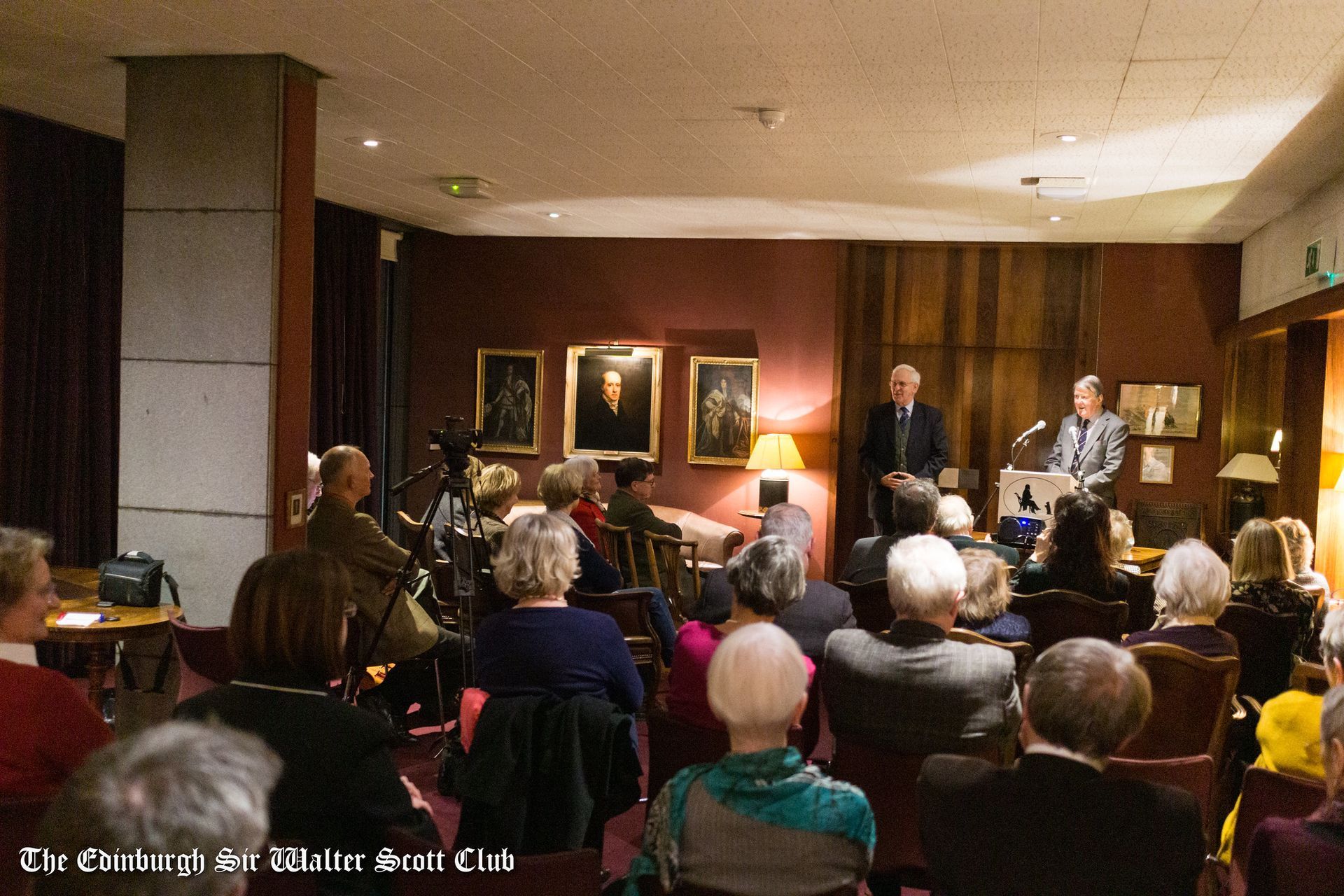Russia and Scottland: Russia’s debt to Sir Walter
Thursday 15th May 2014
Summary of the Talk:
Dairmid's talk explored Russia’s literary and cultural connections with Sir Walter Scott.
Key Themes & Discussion Points
1. The Evolution of the Russian Language & Literature
- 18th Century Russia: The aristocracy spoke French, which dominated literature, salons, and private conversations.
- Mikhail Lomonosov & Nikolai Karamzin: Developed Russian as a literary language by blending Church Slavonic with everyday Russian.
- Catherine the Great (1762-1796): Promoted Russian in education and law, though French remained dominant.
- Napoleonic Wars (1803-1815): Shifted perceptions—French was associated with the enemy, and Russian gained national prestige.
- Pushkin’s Contribution: Revolutionized Russian literature by refining and expanding the language, much like Scott did for English and Scots.
2. Sir Walter Scott’s Influence on Russian Writers
- Early Translations:
- Scott’s novels were first read in French translations before Russian versions appeared in the late 1820s.
- The Scottish dialect in Scott’s novels was often lost, leading Russian readers to believe Scottish peasants were highly refined.
- Alexander Pushkin (1799-1837):
- Read Scott’s novels in French and admired his historical novel style.
- The Captain’s Daughter (1836), a novel about the Pugachev Rebellion (1773-75), was inspired by Scott’s historical method.
- Used Scott’s device of placing fictional characters in historical events.
- The heroine Masha mirrors Jeanie Deans from The Heart of Midlothian.
- Mikhail Lermontov (1814-1841):
- Fascinated by Scotland due to his Scottish ancestry (Learmonth).
- Admired Old Mortality, mentioning it in A Hero of Our Time.
- Found Scott’s novels "dry" but loved The Lady of the Lake and Ossian.
- Fyodor Dostoyevsky (1821-1881):
- Read Scott extensively, though his own work was darker and more psychological.
- Poor Folk was influenced by Scott’s St. Ronan’s Well & The Monastery.
- Recommended Scott for fostering imagination and moral depth.
- Leo Tolstoy (1828-1910):
- War and Peace (1869) follows Scott’s historical novel model.
- Tolstoy’s blend of fictional and historical characters echoes Waverley.
- Found Scott’s common folk more authentic than his own.
3. The Popularity of Scott in 19th Century Russia
- Women loved Scott’s heroines, who were seen as strong and intelligent.
- Fashion trends: Parisian and Russian ladies wore tartan and "Scottish" outfits inspired by Scott.
- Russian nobility admired Scott:
- Princess Galatzina hosted a Scott-themed evening in Paris where Russian women wore tartan.
- Tsar Nicholas I recommended writing "à la Scott" to Pushkin.
4. Scott’s Legacy in Russia
Soviet Period (1928-1991):
- Despite Western censorship, Scott’s works were widely published.
- 1960s "Mini Thaw": 20 volumes of Scott’s works were printed.
- Waverley became one of the most-sold books in Russia.
Modern Russia:
- Scott remains recommended reading in schools.
- Professor Dolinin describes Scott as essential for children’s moral and historical education.
- However, modern readers struggle with long novels due to digital distractions.
Interesting Points & Takeaways
- Pushkin’s Famous Book Request: While in exile, he asked for:
- Scott’s novels
- Fouché’s Memoirs
- Pickles
- Limburg cheese
- Schiller’s works
- A corkscrew!
- A mix of literary and practical survival tools!
2. Scott’s Unexpected Influence on Fashion:
- Russian women wore "Rebecca caps" (from Ivanhoe).
- Quentin Durward coats became a trend.
- Court balls featured Scott-inspired tableaux vivants.
3. Lermontov’s Scottish Connection:
- Descended from the Learmonths, who claimed lineage from Thomas the Rhymer.
4. Dostoyevsky’s Opinion on Scott:
- "Develops imagination and moral depth."
- Recommended Scott as a counterbalance to existential despair.
5. Fast Reader’s Hilarious Summary of War and Peace:
- After reading it in 10 minutes, he said:
- "I think it was about Russia." 🤦♂️
Final Thoughts
- Scott’s impact on Russian literature is profound, shaping Pushkin, Lermontov, Dostoyevsky, and Tolstoy.
- His historical novel model inspired Russia’s greatest authors.
- His romanticized Scottish identity became popular in Russia, influencing fashion, literature, and even royal recommendations.
- While his works remain valued, modern Russian readers—like in the West—increasingly favor shorter, faster-paced stories.
Download the [transcript]

Download the [transcript]
Introduction by Alasdair Hutton:
This Club is exceedingly fortunate to have Lt Commander Dairmid Gunn OBE as one its longest standing and quietly effective members.
Dairmid has been on the Council for more than twenty years and as our Chairman saw the Club’s transition from the twentieth century to this one.
Dairmid was a career officer with the Royal Navy for 20 years serving in Korea and at Suez and of course, since this was the period of the Cold War, at Dartmouth he had learned Russian from the very distinguished Russian émigré Count Sologoop. As a result he was appointed the Assistant Naval Attache in Moscow and developed a life-long attachment to the country
He was recruited by the great Sir Fitzroy Mclean to head the Scottish end of the Great Britain - USSR Association to help with Russian visitors and that eventually became the Scotland – Russia Forum.
But his OBE came not from his naval service but for his services to Scottish agriculture as Director of the Scottish Agricultural Organisation and his co-ordination of the British Food and Farming Campaign promoted by the Duke of Edinburgh.
As a fluent Russian linguist Dairmid was well aware of how much Sir Walter Scott influenced Russian writing in the first half of the nineteenth century being read by such distinguished novelists as Pushkin and Tolstoy and tonight he will outline Russia’s debt to Sir Walter in Russia and Scotland.


